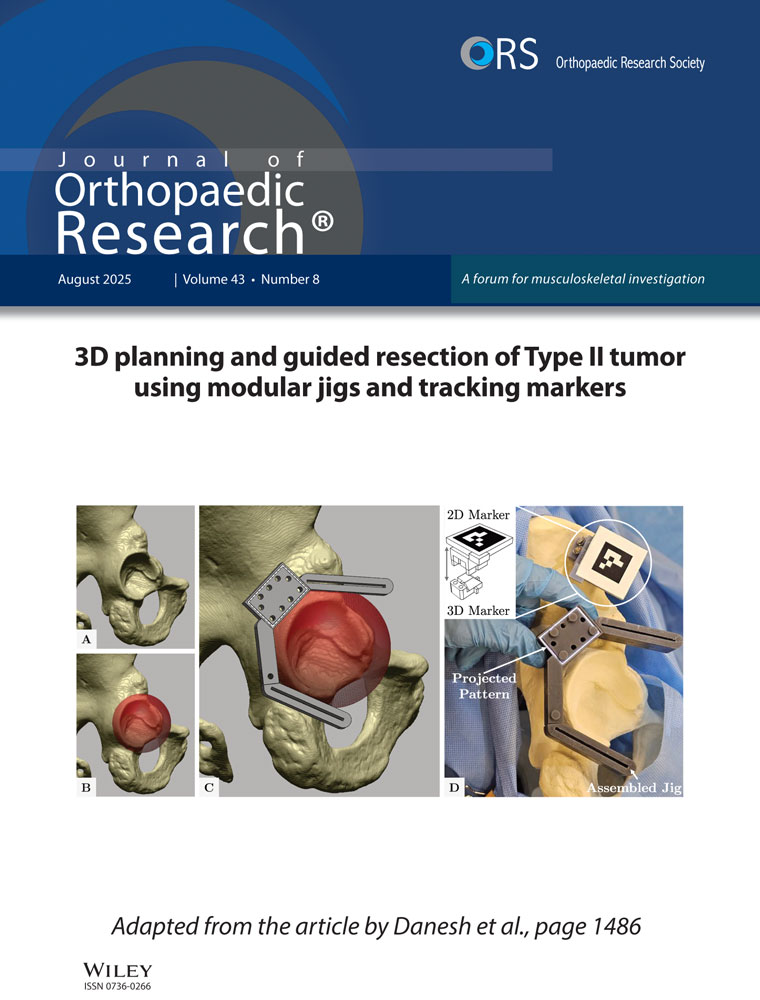The effect of recombinant human bone morphogenetic protein-2 on femoral reconstruction with an intercalary allograft in a dog model
Abstract
This study compared the effect of augmentation of allograft–host bone junctions with recombinant human bone morphogenetic protein-2 (rhBMP-2) on an absorbable collagen sponge (ACS), autogenous cancellous bone graft (CBG), and a collagen sponge alone in a canine intercalary femoral defect model repaired with a frozen allograft. Outcome assessment included serial radiographs, dual energy X-ray absorptiometry scans, and gait analyses, and mechanical testing and histology of post-mortem specimens. The distal junction healed more quickly and completely with rhBMP-2 than ACS alone based on qualitative radiography and histologic evaluations. The primary tissue in the unhealed gaps in the ACS group was fibrous connective tissue. The proximal allograft–host bone junction had complete bone union in the three treatment groups. There was significantly greater new bone callus formation at both junctions with rhBMP-2 than with CBG or ACS alone that resulted in increased bone density around the allograft–host bone junctions. All dogs shifted their weight from the treated leg to the contralateral pelvic limb immediately after surgery. Weight bearing forces were redistributed equally between the pelvic limbs at 12 weeks after surgery with rhBMP-2, at 16 weeks after surgery with CBG, and at 24 weeks after surgery with ACS alone. Bending and compressive stiffnesses of the whole treated femora were equal to the contralateral control femora in all treatment groups, whereas torsional rigidities of the whole treated femora for the CBG and ACS groups were significantly less than the control. Both the proximal and distal junctions the treated with rhBMP-2 had torsional stiffnesses and strengths equal to intact control bones. Ultimate failure torques of the proximal junctions of the CBG group and of both junctions of the ACS group were significantly less than the BMP-treated bones. Augmentation of the allograft–host bone junctions with rhBMP-2 on an ACS gave results for all parameters measured that equaled or exceeded autogenous graft in this canine intercalary femoral defect model. © 2001 Orthopaedic Research Society. Published by Elsevier Science Ltd. All rights reserved.




